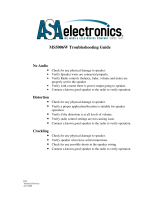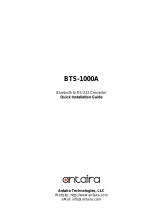
SAFETY AND GENERAL INFORMATION
68P80401P05 v
Cleaning and Drying Considerations
Using a leather carry case may help protect the surfaces and help
prevent liquids (e.g., rain) from entering into the interior of the
radio product. This product is not water proof, and exposing the
unit to liquids may result in permanent damage to the unit.
If your radio product interior gets wet, then do not try to
accelerate drying with the use of an oven or a dryer as this will
damage the radio product and void the warranty. Instead, do the
following:
1. Immediately power off the radio product.
2. Remove Battery and SIM card (if so equipped) from radio
product.
3. Shake excess liquid from radio product.
4. Place the radio product and battery in an area that is at room
temperature and has good air flow.
5. Let the radio product, battery, and SIM card dry for 72 hours
before reconnecting the battery and/or powering on the radio
product.
If the radio product does not work after following the steps
listed above, contact your dealer for servicing information.
Clean the external surfaces of the radio product with a damp
cloth, using a mild solution of dishwashing detergent and water.
Some household cleaners may contain chemicals that could
seriously damage the radio product. Avoid the use of any
petroleum-based solvent cleaners. Also, avoid applying liquids
directly on the radio product.
Accessory Safety Information
IMPORTANT: SAVE THESE ACCESSORY SAFETY
INSTRUCTIONS
• Before using any battery or battery charger, read all the
instructions for and cautionary markings on (1) the battery,
(2) the battery charger, which may include a separate wall-
mounted power supply or transformer, and (3) the radio
product using the battery.
• Do not expose any battery charger to water, rain, or snow as
they are designed for indoor or in-vehicle use only.
• To reduce the risk of damage to the cord or plug, pull by the
plug rather than the cord when you disconnect the battery
charger from the power source outlet.
• Do not operate any battery charger with a damaged cord or
plug — replace them immediately.
• Battery chargers may become warm during operation, but
not hot. If it becomes hot to the touch, unplug it from the
power outlet immediately and discontinue its use.
For Vehicles Equipped with an Air Bag
Do not place a portable radio product in the area over the air bag
or in the air bag deployment area. Air bags inflate with great
force. If a portable radio is placed in the air bag deployment area
and the air bag inflates, the radio product may be propelled with
great force and cause serious injury to occupants of the vehicle.
Potentially Explosive Atmospheres
Turn off your radio product prior to entering any area with a
potentially explosive atmosphere, unless it is a radio product type
especially qualified for use in such areas as “Intrinsically Safe”
(for example, Factory Mutual, CSA, or US approved). Do not
remove, install, or charge batteries in such areas. Sparks in a
potentially explosive atmosphere can cause an explosion or fire
resulting in bodily injury or even death.
NOTE: The areas with potentially explosive atmospheres
referred to above include fueling areas such as
below decks on boats; fuel or chemical transfer or
storage facilities; areas where the air contains
chemicals or particles, such as grain, dust or
metal powders; and any other area where you
would normally be advised to turn off your vehicle
engine. Areas with potentially explosive
atmospheres are often, but not always, posted.
Blasting Caps and Areas
To avoid possible interference with blasting operations, turn off
your radio product when you are near electrical blasting caps, in a
blasting area, or in areas posted: “Turn off two-way radio”. Obey
all signs and instructions.
P
Operational Warnings
P
WARNING: To reduce the risk of
injury, charge only the rechargeable
batteries listed in the Accessories
section of this manual. Other types
of batteries may burst, causing
personal injury and damage.
Antennas
Do not use any portable radio product that has a damaged
antenna. If a damaged antenna comes into contact with your skin,
a minor burn can result.
Batteries
All batteries can cause property damage and/or bodily injury, such
as burns if a conductive material, such as jewelry, keys, or beaded
chains touches exposed terminals. The conductive material may
complete an electrical circuit (short circuit) and become quite hot.
Exercise care in handling any charged battery, particularly when
placing it inside a pocket, purse, or other container with metal
objects.
F
Operational Cautions






















